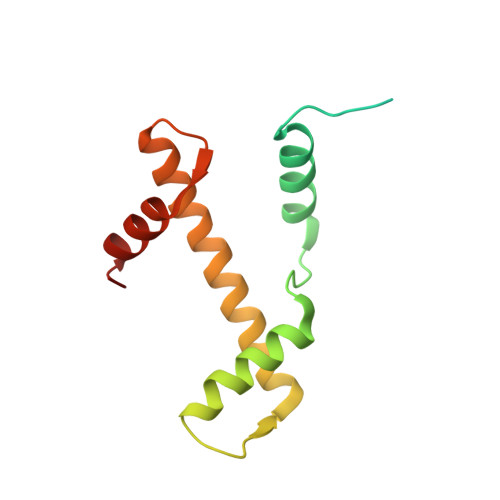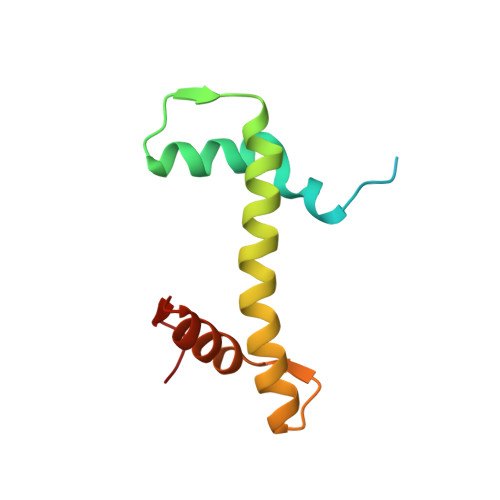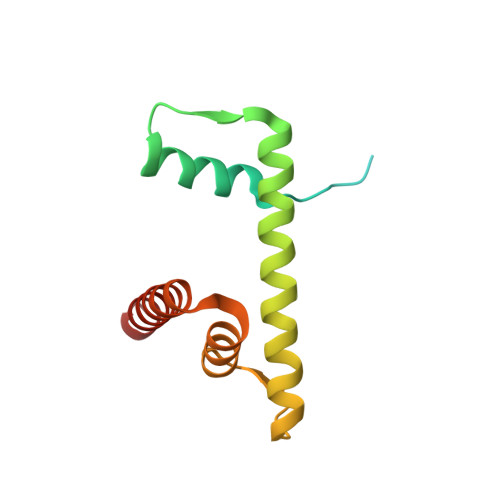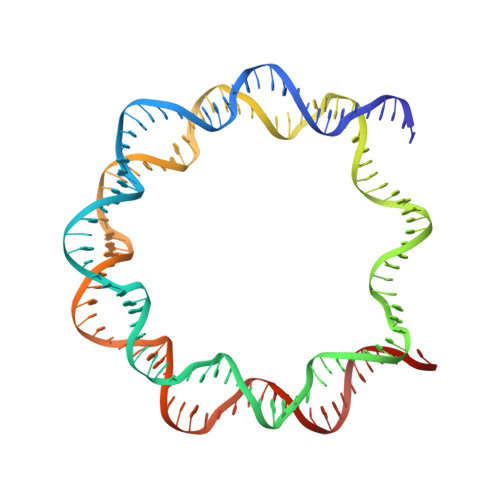DNA stretching and extreme kinking in the nucleosome core
Ong, M.S., Richmond, T.J., Davey, C.A.(2007) J Mol Biol 368: 1067-1074
- PubMed: 17379244
- DOI: https://doi.org/10.1016/j.jmb.2007.02.062
- Primary Citation of Related Structures:
2NZD - PubMed Abstract:
DNA stretching in chromatin may facilitate its compaction and influence site recognition by nuclear factors. In vivo, stretching has been estimated to occur at the equivalent of one to two base-pairs (bp) per nucleosome. We have determined the crystal structure of a nucleosome core particle containing 145 bp of DNA (NCP145). Compared to the structure with 147 bp, the NCP145 displays two incidences of stretching one to two double-helical turns from the particle dyad axis. The stretching illustrates clearly a mechanism for shifting DNA position by displacement of a single base-pair while maintaining nearly identical histone-DNA interactions. Increased DNA twist localized to a short section between adjacent histone-DNA binding sites advances the rotational setting, while a translational component involves DNA kinking at a flanking region that initiates elongation by unstacking bases. Furthermore, one stretched region of the NCP145 displays an extraordinary 55 degrees kink into the minor groove situated 1.5 double-helical turns from the particle dyad axis, a hot spot for gene insertion by HIV-integrase, which prefers highly distorted substrate. This suggests that nucleosome position and context within chromatin could promote extreme DNA kinking that may influence genomic processes.
Organizational Affiliation:
Division of Structural and Computational Biology, School of Biological Sciences, Nanyang Technological University, 60 Nanyang Drive, Singapore 637551, Singapore.




















